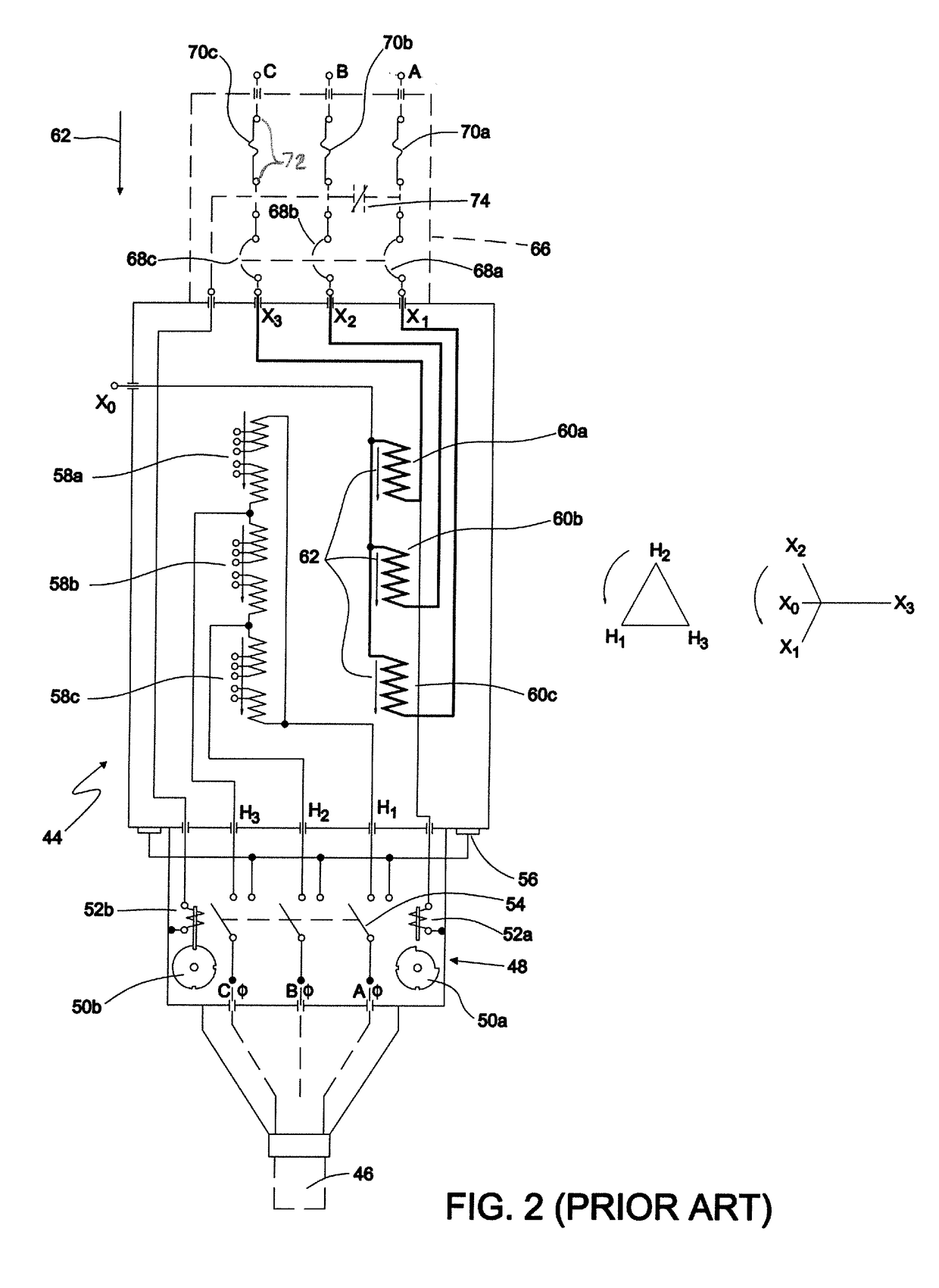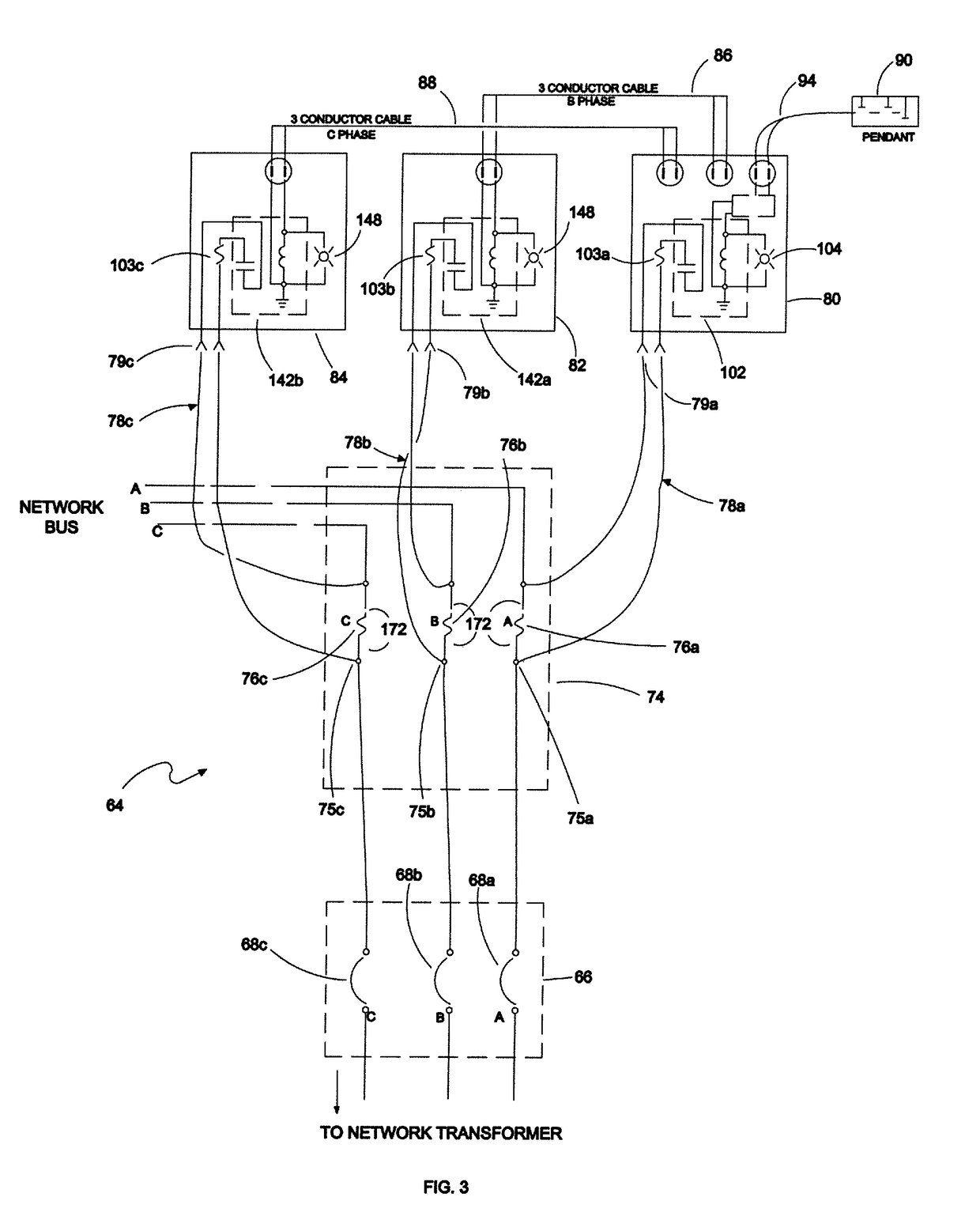Apparatus for isolating a network protector in an electric power distribution network
a technology for electric power distribution networks and protective devices, applied in electrical apparatus, connection, coupling device connections, etc., can solve the problems of damage to the network, and the destruction of the forced paralleling of out of phase feeder system components, so as to improve customer service and satisfaction as well as worker safety, reduce the time required, and the effect of greater safety
- Summary
- Abstract
- Description
- Claims
- Application Information
AI Technical Summary
Benefits of technology
Problems solved by technology
Method used
Image
Examples
Embodiment Construction
[0030]FIG. 1 is shown a combined schematic and block diagram of the portion of a conventional electrical power distribution network transformer disposed within a network vault 10 in a conventional electrical power distribution network. Network vault 10 includes four paralleled transformers 22a-22d each coupled to a respective network energized secondary bus. The substation transformers with voltage regulators 12a-12d for the network maintain the input voltage provided to the network 10 so as to match the primary voltage supplied by each networked substation transformer 12a-12d. The substation 10 transformers bus further includes three normally open bus tie breakers 16a, 16b and 16c connected between each adjacent pair of network cables 14a-14d, and further coupled to a substation bus 32. Also connected to respective network cables 14a-14d are four network feeder breakers 18a-18d. Other network vaults 15a-15d are coupled to each of the four network cables 14a-14d at the output of eac...
PUM
 Login to View More
Login to View More Abstract
Description
Claims
Application Information
 Login to View More
Login to View More - R&D
- Intellectual Property
- Life Sciences
- Materials
- Tech Scout
- Unparalleled Data Quality
- Higher Quality Content
- 60% Fewer Hallucinations
Browse by: Latest US Patents, China's latest patents, Technical Efficacy Thesaurus, Application Domain, Technology Topic, Popular Technical Reports.
© 2025 PatSnap. All rights reserved.Legal|Privacy policy|Modern Slavery Act Transparency Statement|Sitemap|About US| Contact US: help@patsnap.com



